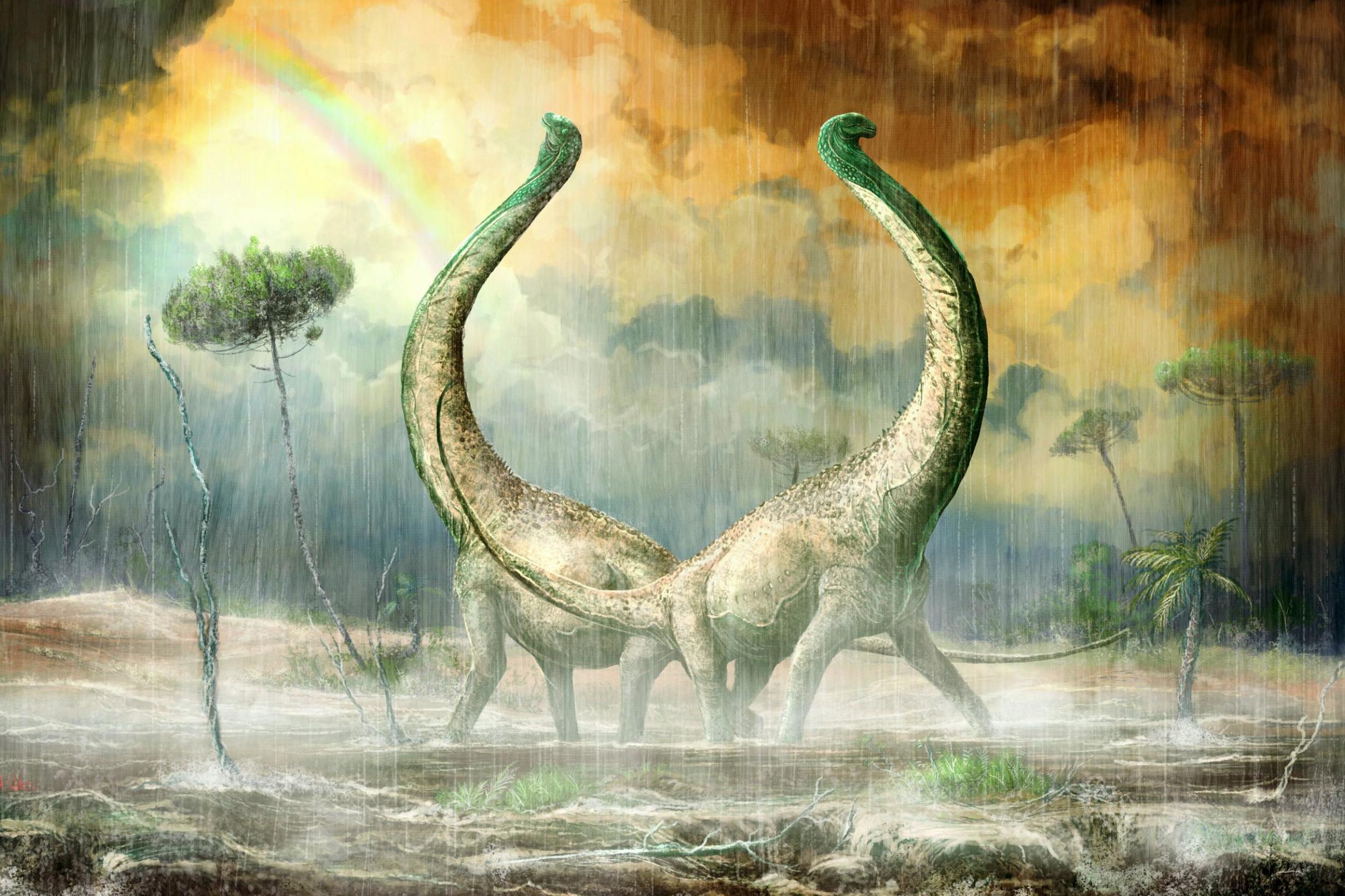Mnyamawamtuka: Scientists discover new dinosaur with heart-shaped tail
The dinosaur lived 100 million years ago

A new dinosaur with a heart-shaped bone in its tail has been discovered by scientists.
The plant-eating dinosaur was discovered in Africa and reportedly lived 100 million years ago.
It was also extremely large when it walked the Earth, as the dinosaur was a member of the titanosaurs - a classification of the largest animals to ever live - and weighed up to 20 tons.
Apart from its vast size, the 30-foot dinosaur also displayed another fascinating feature - heart-shaped bones in its tail.
Researchers named the dinosaur Mnyamawamtuka moyowamkia from Swahili for “animal of the Mtuka” and “heart-shaped tail” and joked that the animal “wore it’s heart on its tail.”
Dinosaurs in the Wild
Show all 18In addition to its unique bone structure, the discovery of the dinosaur’s remains, which were found in a riverbed in the East African Rift system of Tanzania, allows scientists to piece together information about how ecosystems evolved in Africa during the Cretaceous period.
Previously, titanosaurs were identified in South America, but the new species discovered in Tanzania, Egypt and other parts of the African continent offer a more complete picture of their evolution.
Of the new dinosaur, lead author Dr Eric Gorscak, a PhD graduate of Ohio University, current research associate, and professor at Midwestern University, said: “Although titanosaurs became one of the most successful dinosaur groups before the infamous mass extinction capping the Age of Dinosaurs, their early evolutionary history remains obscure.
“Mnyamawamtuka helps tell those beginnings - especially for their African-side of the story."
The new dinosaur, described in the journal PLOS ONE, is one of three new titanosaurs to be found in the area. Of the fossilised remains, Mnyamawamtuka is one of the most complete.
The fossilised bones of the dinosaur, which were first discovered in 2004 and excavated over the next five years, suggest the animal also shared similarities with another dinosaur “Malawisaurus, from just across the Tanzania-Malawi border,” according to Dr Gorscak.
According to co-author Dr Patrick O’Connor, professor of anatomy at Ohio University, the discoveries of the new dinosaurs “is like doing a four-dimensional connect the dots.”
“Each new discovery adds a bit more detail to the picture of what ecosystems on continental Africa were like during the Cretaceous, allowing us to assemble a more holistic view of biotic change in the past,” he said.
Judy Skog, program director in the National Science Foundation’s division of Earth Sciences, added: “It’s also timely information about an animal with heart-shaped tail bones during this week of Valentine’s Day.”
To excavate the remains, field teams suspended by ropes and large-scale mechanical excavators were used.
“Without the dedication of several field teams - including some whose members donned climbing gear for the early excavations - the skeleton would have eroded away into the river during quite intense wet seasons in this part of the East African Rift System,” Dr O’Connor said.
The researchers also discovered other animals in the East African Rift, including relatives of early crocodiles and evidence of “insect farming” from fossilised termite nests, as well as clues about the evolution of monkeys and apes.
"The Tanzanian story is far from over but we know enough to start asking what palaeontological and geological similarities and dissimilarities there are with nearby rock units,” Dr Gorscak said. “Revisiting Malawi is my top priority to address these broader, regional questions. With Mnyamawamtuka and other discoveries, I'm not sure to view it as writing or reading the next chapters in the paleontological book of Africa. I'm just excited to see where this story is going to take us.”
Subscribe to Independent Premium to bookmark this article
Want to bookmark your favourite articles and stories to read or reference later? Start your Independent Premium subscription today.

Join our commenting forum
Join thought-provoking conversations, follow other Independent readers and see their replies